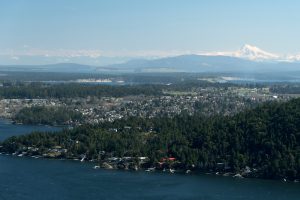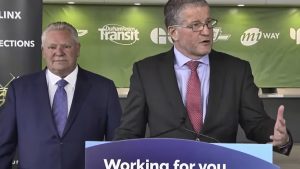From an engineering perspective, it is possible to build a subway under Queen Street and/or other east-west streets such as Adelaide, King or Wellington through the financial district.
And, if one cares to consult with transit gurus such as Ed Levy or Richard Soberman, such a subway would make perfectly good sense to relieve overcrowding on the current subway lines. The question is not whether a particular area already has a high concentration of public transit, it is whether the existing transit infrastructure is well used and, if so, whether that area should be served by more higher order transit.
Our video series demonstrates that despite how well-meaning politicians might be in their transit interventions, time and time again, a personal agenda is pushed through with little consideration for the evidence-based input of transit professionals who, increasingly it seems, are forced to accommodate the political aspirations, often by agreeing to downplay or suppress selected drawbacks of particular proposals.
Toronto faces another excruciatingly difficult dilemma right now. Studies are being done on a regional express rail service, a.k.a SmartTrack.
There is a lot of political momentum for this project but is it really the best solution now? Certainly the proposal, referred to as a "surface subway", appears to offer capital cost savings which are appealing compared to other options. There would be some tunnelling in the west end that, while introducing a cost penalty, is not insurmountable.
The line is, however, very close to the existing Scarborough Rapid Transit line where a subway has been proposed to replace it. Will the transit professionals be permitted to demonstrate that ridership might be cannibalized with these two corridors so close together?
In a constrained fiscal environment, it is exceedingly important that each $1 billion in potential transit investment be spent on projects that will provide the best outcomes. It is essential that we don’t get locked into transit projects because of certain political assumptions and promises.
With proper foresight, the studies on the below ground regional relief line (Ed Levy’s priority), SmartTrack and Scarborough RT revitalization will be interlinked in terms of recognition of different options for mode, alignment and other key variables. Will our decision-makers have the political maturity to accept the findings and back down from their preconceived notions if the best evidence points to a different plan?
As University of Toronto professor emeritus Richard Soberman has said: "Politicians should make decisions on policies, objectives and plans developed by the professionals and then complete their responsibilities by ensuring that the required long term funding is available to both build and operate the planned rapid transit facilities. Leave the details regarding technologies, station locations and alignments to the professional planners and engineers."
This is the concluding part in this two-part column about taking the politics out of transit planning.
This piece originally appeared in ReNew Canada. See the May 6 DCN for the first part or visit www.dcnonl.com.
Andy Manahan is Residential and Civil Construction Alliance of Ontario executive director and also is a member of the DCN Editorial Advisory Board.
Send comments to editor@dailycommercialnews.com.






Recent Comments
comments for this post are closed